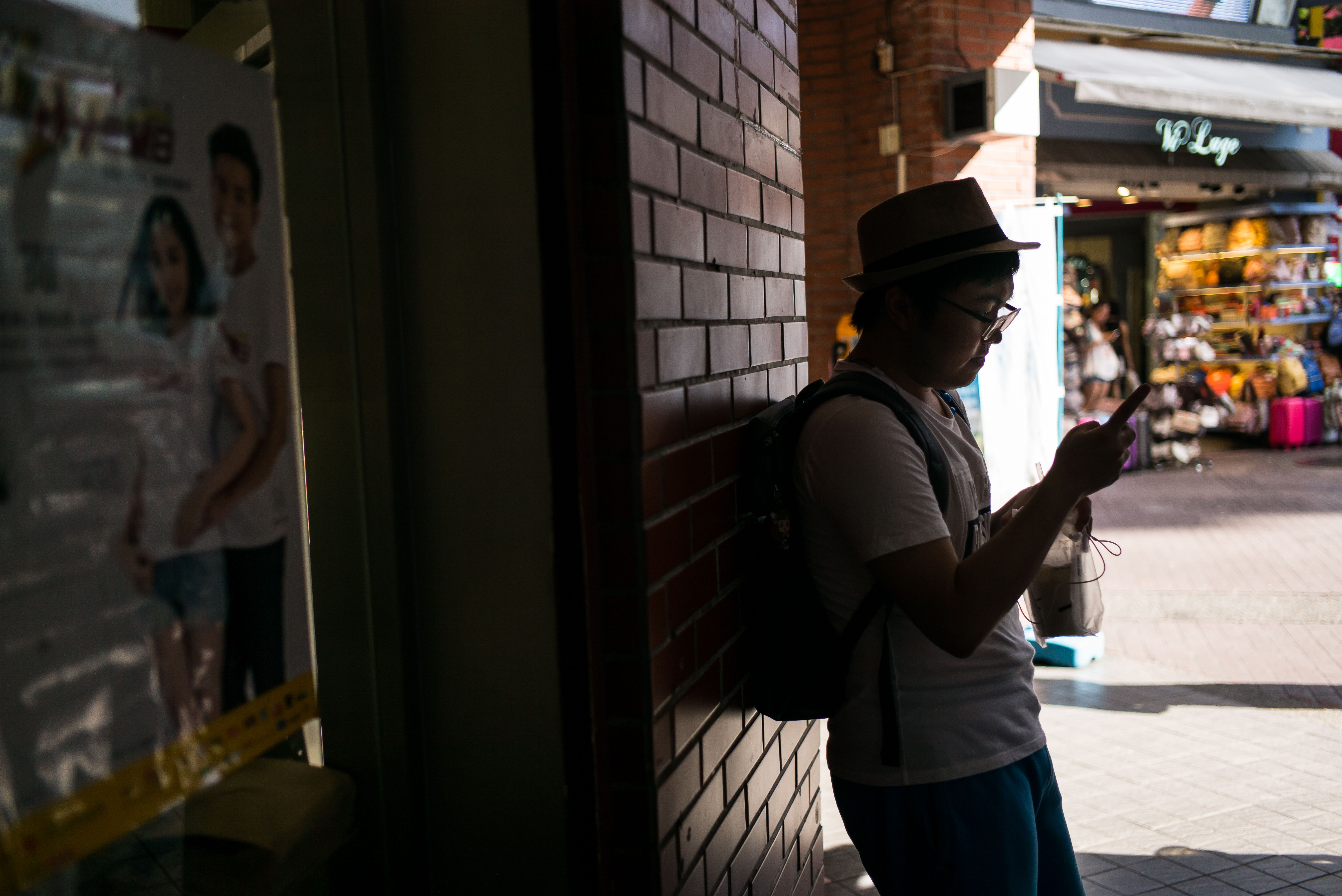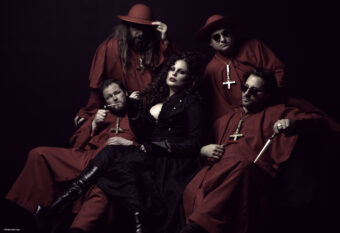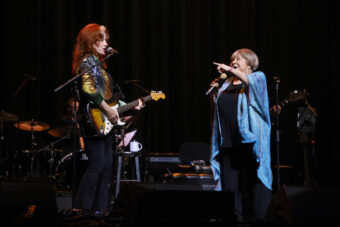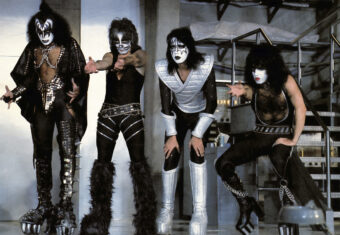Our favorite music can uplift us, inspire us, comfort us in times of pain. That power is exactly what makes our favorite songs a valuable branding accessory for the tech companies that mediate so much of our everyday lives. What better way to get almost anyone to align themselves with a corporation? What better personalization tool for a brand to get behind than the one that viscerally triggers an emotional response? In the Myspace era, music fans could slap “Hey There Delilah” next to your Top 8 to set the mood as you scrolled through their page, and today Facebook users are able to choose tunes to accompany photo slideshows. The song-sharing feature in Apple’s recently released iOS 10 lets you advertise your taste to the friends you text with, and has the added bonus of encouraging them to sign up for Apple Music. Now, America’s favorite dating app has entered the game.
In late September, Tinder and Spotify rolled out their new partnership with much fanfare, offering users the ability to add songs to your profile to help better find their soulmate. This is a change that will impact a lot of people: Spotify is by far the biggest streaming service in the world, and though Tinder does not publicly release its number of users, a New York Times article from 2014 estimated it as something like 50 million. The integration between the two services allows you to see matches based on who has similar taste in music to yours—which seems like a pretty useful feature, especially if you’re nerdy and obsessive enough to be reading a music publication—as well as display your top artists and a carefully chosen “anthem song” on your profile, to share your true musical self with the world.
This brings us to the question at hand: What sort of music would you pick to make yourself most attractive to a potential date? Is there a particular kind of music you should pick? Will Ty Dolla $ign’s boner jams help you replicate his suaveness, or should you telegraph your sensitive side with How to Dress Well? Or maybe you should go for “Nookie,” since anyone who might “swipe right” on you with that song playing might be in it for that exact reason?

Also Read
WHY SO MANY MUSIC TECH DEALS FAIL
Obviously, music and the lyrics that accompany it have the power to elicit certain emotions in listeners: the melodic flourishes of “Someone Like You” are part of why it makes you tear up, and “bluesy” music often feels that way because of its traditional I-IV-V chord change and juxtaposition of notes from parallel major and minor pentatonic scales. There’s a reason that music nerdom is the romantic subplot of so many cult movie classics from the ‘90s–musical kinship is often associated with attraction. Could there be something behind branding your dating profile with the right music?
https://www.youtube.com/watch?v=f49Z0ZPBaWA
SPIN asked Hauke Egermann, director of the music psychology group at the University of York in the UK, and Kenneth Aigen, associate professor of music therapy at NYU, for some advice on the matter. “I don’t think that there are any universal, magic formulas that you need to compose a piece of music in order to make everyone love it, or love you. It doesn’t work that way. It’s a little more complex,” Egermann said. “But there are definitely relationships between musical structures and how people react to them.”
The ways in which we react to music can be broken into two broad categories, Egermann said. On one side, there are your responses to the sounds themselves on a purely physical level, waves of vibrating air molecules removed from any social or historical context. For simplicity’s sake, we’ll call these your “innate” responses. On the other, there are those social and historical responses, informed by a lifetime of listening to and absorbing the music around you. We’ll call these your “learned” responses.Of course, every time we listen to music, we respond in both innate and learned ways, so it’s basically impossible to separate the categories in practical, day-to-day life. But it’s a useful distinction to make in conversation.
Innate responses to music
For an example of an innate response to music, consider the tritone. This is a combination of two notes–the fourth and seventh degrees of a major scale, or fa and ti if you’re singing solfège like in The Sound of Music—that is so jarring and dissonant that 18th-century Catholics knew it as diabolus in musica, or “the devil in music.” For an instantly recognizable tritone, listen to the first two notes of the theme to The Simpsons–when the singers are singing “The Simp…,” before the melody resolves upward on “…sons.” If you like your culture older and more dignified, “Maria” from West Side Story uses the exact same motif.
https://www.youtube.com/watch?v=VpdB6CN7jww
The “devil” thing may have been a result of the church’s delicate sensibilities, but there does seem to be something innate in the tritone that we find ugly. It probably has something to do with what’s known as a frequency ratio. The simplest and clearest-sounding two-note combination available to musicians, known as an octave, has a frequency ratio of 2:1. This means that sound waves from the higher note in the octave vibrate twice as quickly as those of the lower note. A major third, another simple and pleasing two-note combination, has a ratio of 5:4. A tritone, by contrast, comes out to 45:32–the most complex frequency ratio that exists in the standard Western tuning system. Even animal brains seem to have a hard time processing it: A few years ago, I used to playfully torment my old cat by hammering out C/F-sharp tritones and watching his back arch every time. (RIP Snook, I hope it wasn’t my horrible piano playing that killed you.)
A useful list of songs that heavily feature tritones, including Jimi Hendrix’s “Purple Haze,” Marilyn Manson’s “The Beautiful People,” and Metallica’s “Enter Sandman,” can be found here. Because of the tritone’s known unsettling effect, you might consider avoiding them in your Tinder profile. But really, it’s a crapshoot: If someone’s a Hendrix fan or a big pothead, they’ll probably respond well to “Purple Haze,” dissonance be damned.
Unfortunately, there’s no angelus in musica–no combination of notes that carries the opposite innate effect, at least not as viscerally as the tritone. According to Egermann, the best we can do is predict what sort of songs arouse people’s attention and elicit an emotional reaction in them, but whether that emotional reaction is a good one or a bad one is anyone’s guess. “From my research, I find that arousal is very direct,” he said, using arousal to refer to this attentive, potentially emotional state. “It is not so much mediated by cultural background and knowledge and individual hearing. So that’s why you can say, ‘Just use loud and fast music and everyone will respond with increased arousal.'”
What is mediated by cultural background and individual taste is whether innate responses like increased arousal will register positively or negatively with the listener, Egermann and Aigen both pointed out. I’m a fan of noise, loud punk rock, metal–abrasive music that, if I put it on my profile, would almost certainly catch your attention. But whether you enjoy the music or plug your ears will depend entirely on your own background with those genres.
“People talk about the move to the octave as a return home, a resolution. That’s sort of universal,” Aigen said. “But the idea of home might have different associations for people—it could be a positive or a negative association, based on their histories.” Even reactions that might at first seem innate are almost always colored by social context.
Learned responses to music
Though innate responses to are fun to think about in a heady sort of way, Egermann and Aigen agreed that music’s social functions might be more useful to a lonely person, or one actively seeking love. Both professors spoke at length about the ways in which our favorite music figures into our self-conceptions.
“Something that music therapists and sociologists of music talk about a lot lately is how we all use music to create our sense of self, to create our identity,” says Aigen. “We do that in a number of ways: by identifying with a particular music subculture, a particular band or artist, particular venues, particular events. We listen to music, and we use it in a way to regulate and define who we are. Part of the way that we know ourselves is the way our favorite musicians reflect who we are back on us.”
For devoted fans of EDM or the Grateful Dead, for example–these social networks surrounding the music can be akin to religions.
We also use these favorite musicians to slot ourselves into social groups and advertise the sort of person we are to the world. If you put a group of strangers in a room together and ask them to get to know one another, Egermann pointed out, chances are they’ll eventually start talking about what sorts of music they like. “If you want to say something about yourself, if you use music instead of talking, it might be a much more efficient way to talk about your socioeconomic status, your values, your personality,” he said.
In other words, instead of telling someone, “I’m a white college student who grew up in affluent suburbs and likes to party and smoke weed,” you can just say, “Mac Miller is my favorite rapper.”
According to Aigen, for fans of certain musical subcultures–devoted fans of EDM or the Grateful Dead, for example–these social networks surrounding the music can be akin to religions. “They have a weekly ritual that they go to: to a concert, or to the club. At the ritual they reach ecstatic states. They have their sacred texts: the song lyrics that they pore over and debate. The culture provides a particular sort of dress and body adornment. Most importantly, people find a community that manifests certain values and gives a code for how to live,” he said, pointing to the work of music sociologist Robin Sylvan. (Note: EDM producer Dylan Francis’s “Candy” is one of the songs featured in Tinder’s commercial for the partnership.)
“If you’re just looking for sex or hookup, none of this matters,” said Aigen. “But if you’re looking to make a more meaningful connection, then use your most important music, music that relates to who you are as a person–your feelings, your thoughts, your values, your worldview. Your music is a portrait in sound of you as a human being.”
What all of this means for singles on the prowl is simple: If you’re trying to attract someone who shares some of your values and interests, don’t try to game the system. Advertising yourself on a dating app might tempt you to be showy, adding that obscure post-punk single you just heard because it makes you seem cooler, or “Smooth” by Santana to broadcast your finely tuned sense of irony. But honesty will probably serve you best. If you’re a Deadhead or a hardcore raver, signal your membership in the tribe with “Sugar Magnolia” or “LFO.” If you don’t identify so heavily with any particular subculture, the answer’s even easier: Just pick a song you really like.




